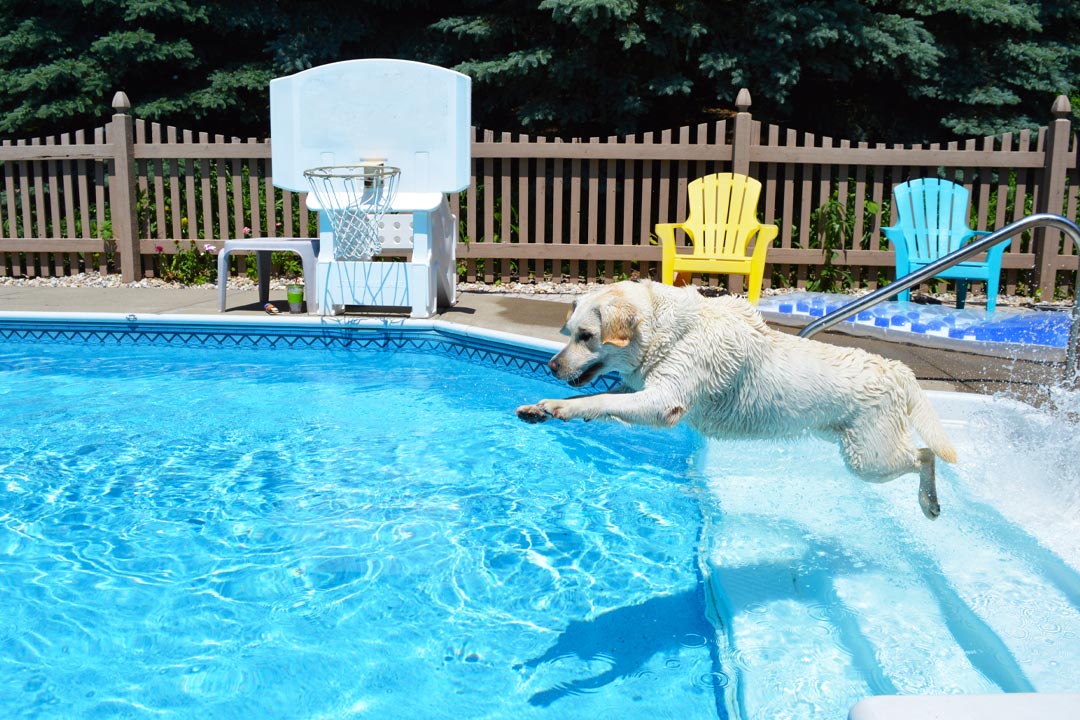Warm weather brings the opportunity for fun outdoor activities, and what’s a better way to beat the heat than taking a dip in the pool? If your pet loves water as much as you do, swimming can be a fantastic way to spend time together. However, ensuring your pet’s safety around water is essential. This blog will explore essential tips and guidelines for pet pool safety, helping you and your pet enjoy swimming without worry. If you have any questions or need more information, feel free to reach out to us at Palos Animal Hospital at (708) 448-6600. We’re here to help you keep your pet safe and healthy.

Understanding the Basics of Pet Pool Safety
Before letting your pet plunge into the water, it’s vital to understand some basic safety precautions. Not all pets are natural swimmers, and even breeds known for their swimming abilities can get into trouble without proper supervision. Start by introducing your pet to the water gradually, ensuring they’re comfortable and know how to get in and out of the pool safely.
Teaching Your Pet to Swim
Contrary to popular belief, not all dogs are natural swimmers. Cats, in particular, may find water distressing. It’s important to gently introduce your pet to the pool, using treats and toys as encouragement. Always start in shallow water and consider using a pet life vest for extra safety. Never force your pet into the water, as this can lead to fear and anxiety.
Supervision is Key
Never leave your pet unattended near a pool. Accidents can happen quickly, and constant supervision ensures you can react promptly if your pet struggles or seems uncomfortable. It’s also a good idea to keep the pool area securely fenced to prevent your pet from accessing it unsupervised.
Ensuring a Safe Swimming Environment
Creating a safe environment is crucial for pet pool safety. This means keeping the water clean and free of harmful chemicals, ensuring the pool area is secure, and having safety equipment on hand.
Pool Accessibility
Ensure your pet can safely enter and exit the pool. Stairs or a ramp designed for pets can prevent panic and injury. Show your pet where these exits are, practicing getting in and out of the pool together.
Water Quality and Temperature
Just like humans, pets can be sensitive to chlorine and other pool chemicals. Ensure the water is safe for your pet by keeping it clean and well-maintained. Also, be mindful of water temperature, as extreme temperatures can be harmful to your pet.
Health Considerations for Swimming Pets
Swimming is not only fun but also an excellent exercise for pets. However, it’s essential to consider their health and physical capabilities before diving in.
Recognizing Your Pet’s Limits
Not all pets have the same endurance for swimming. Watch for signs of fatigue, such as excessive panting or difficulty keeping their head above water, and ensure your pet takes breaks to rest.
After-Swim Care
Rinse your pet off with fresh water after swimming to remove chlorine or salt, which can irritate their skin. Dry their ears thoroughly to prevent infections, and offer fresh drinking water to keep them hydrated.
Emergency Preparedness
Despite all precautions, emergencies can occur. Being prepared can make all the difference in ensuring your pet’s safety.
Learning Pet CPR
Knowing how to perform CPR on your pet can be lifesaving in an emergency. Consider taking a course to learn the proper techniques, and always have your vet’s contact information handy.
Have a Plan
In case of an emergency, it’s important to have a plan. This includes knowing the quickest route to the vet and having a pet first-aid kit ready. Quick action can prevent serious consequences.
Swimming with your pet can be a joyful and bonding experience when done safely. By following these pet pool safety tips, you’re ensuring fun-filled and safe swimming sessions. Should you have any concerns or wish to discuss your pet’s health and safety further, we at Palos Animal Hospital are just a call away at (708) 448-6600. Let’s make sure your swimming adventures with your pet are safe and enjoyable.


